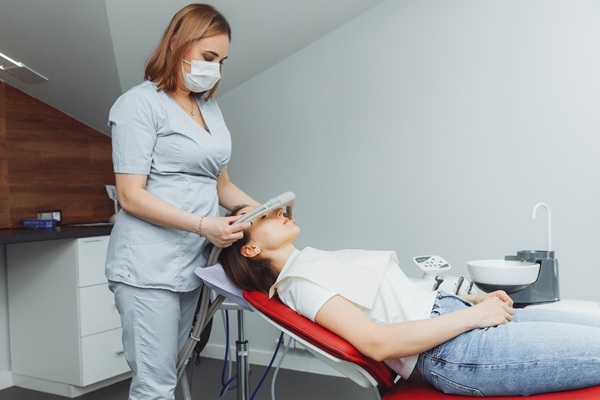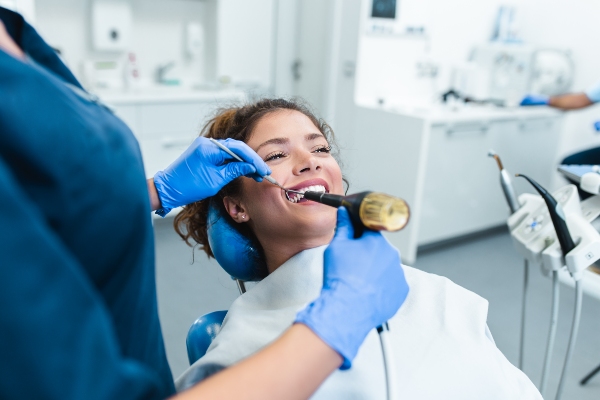The Process of a Gum Graft Explained

A gum graft procedure can be scary for many patients, but it is actually a relatively simple procedure that does not cause the patient too much discomfort. By having a better understanding of what to expect on the day of the operation, you can calm any nerves that exist before your gum graft procedure.
How a gum graft procedure works
Although each gum graft procedure is unique for each patient, the process is similar in most instances. The following is a general idea of what can be expected before, during and after a gum graft procedure.
Evaluation and recommendation
The first step towards receiving a gum graft is to schedule an appointment with a dentist, who can conduct a thorough evaluation of the patient’s mouth and recommend whether or not a gum graft is a viable option. If the patient has experienced gum recession or has cosmetic issues with their natural gum line, then a gum graft may be a good option. After the evaluation and recommendation, if both the dentist and patient agree to treatment, a day and time can be scheduled for the procedure.
The gum graft procedure
There are different types of gum graft procedures, and the steps of the procedure are dependent on the type of gum graft the patient needs. The three main types of gum graft include:
- Free gingival graft
- Connective tissue graft
- Pedicle graft
Each type of gum graft is a surgical procedure, so a local or general anesthetic is applied, and the patient does not feel any pain throughout the process. Although each type of procedure is different, a gum graft most often involves removing gum tissue from the roof of the mouth and implanting it in the area where the gums have receded.
Gum graft aftercare
Most patients can go home within several hours after the procedure, and a full recovery normally happens within two weeks of the gum graft operation. However, it is essential to avoid irritating the affected area during this period, which may involve utilizing mouthwash more than brushing to keep the mouth clean, avoiding certain foods and not placing any pressure on the affected area. Patients should also talk to their dentist about effective ways of managing the pain for the first few days following surgery. The dentist can recommend the best form of pain relief medication to take during recovery. Lastly, be sure to plan for proper rest and avoid intense physical activity for the first few days after the gum graft procedure.
Talk to a dentist about the gum graft process
Going through the gum graft process can be nerve-wracking, and it can be helpful to talk to a dentist about the process. If you are considering a gum graft procedure and want to find a dentist that is able to answer all of your questions and guide you through the entire process, then consult with us today and schedule a time to come in for an initial consultation. Call now to find out how we can help you before, during and after the gum graft surgery.
Request an appointment here: https://www.ohiocosmeticdentists.com or call Ohio Cosmetic Dentists at (614) 503-5240 for an appointment in our Columbus office.
Check out what others are saying about our services on Yelp: Read our Yelp reviews.
Recent Posts
Are you concerned about whether or not you will receive painless dentistry at your next appointment? You aren't alone. In fact, many people every year simply avoid the dentist altogether out of fear that they will have a painful experience. Unfortunately, for some people, they have already had a negative experience, so it's even more…
For healthy teeth and gums, routine dental care is necessary. For most healthy people, two times a year is the recommended frequency for dentist appointments. This is typically adequate for deeper cleaning and preventive care. However, for some patients, more frequent appointments are necessary to manage certain issues and to prevent problems from becoming more…
Endodontics is a branch of dentistry dedicated to saving teeth by treating problems inside the tooth. It focuses on the health of the tooth's pulp and roots, essential to your smile's overall strength and function. Endodontics could be the key to relieving discomfort and preserving your natural teeth if you are experiencing tooth pain or…
Maintaining routine dental care is important for oral and overall health, but many patients have questions about what it consists of beyond daily brushing and flossing. The right answers can help patients of any age understand the importance of providing optimum care for their teeth and the possible issues if they fail to follow through.…


